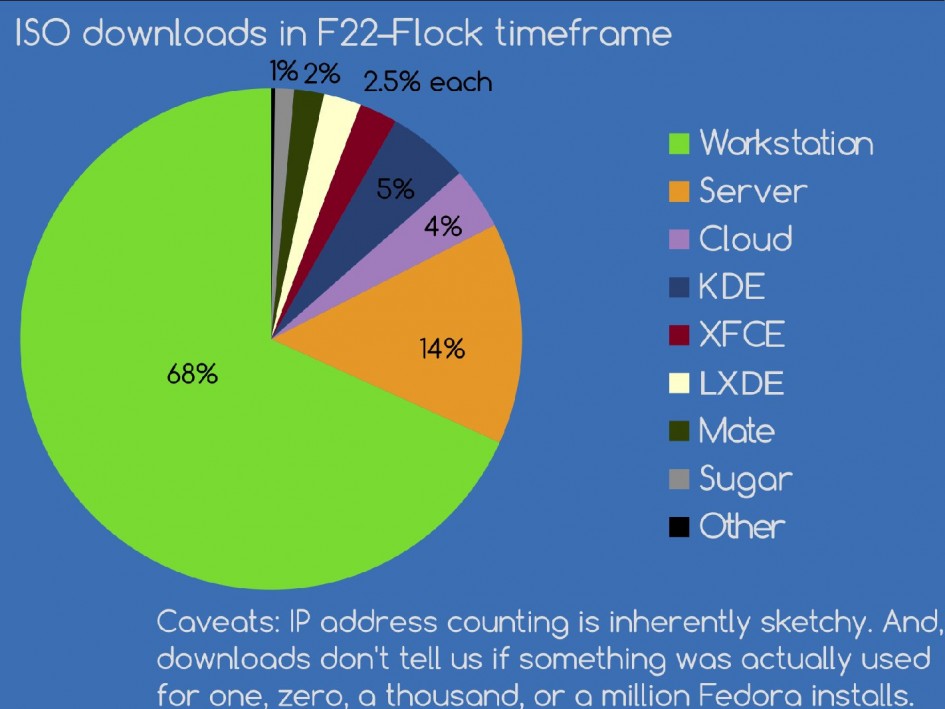As many Fedora contributors can likely agree, there are countless different tasks, operations, and work being done inside the Fedora Project community to work towards our four foundations: Freedom, Friends, Features, First. With all that’s going on, it can sometimes be difficult to know what everyone is working on without doing some digging on the wiki or IRC meeting logs, whether it be translation efforts, the next engineering decision for Fedora, a great new marketing idea, or maybe the achievements of our Ambassadors in a local event.

The Four Foundations of Fedora: Freedom, Friends, Features, First
The Fedora CommOps team is proud to announce the premiere of our newest platform for members of the community to share important news, updates, and information about the Project with others. The Fedora Community Blog will make it easier to be connected to all of the different projects, groups, and efforts going on in the community every day. Teams are encouraged to share their goals, achievements, and calls for assistance on this blog to help increase the overall interconnectedness of the community.
How can I contribute?
Every team or group in the project is encouraged to make an effort to share the work that they do with their groups with the rest of the community. Anyone who is interested in contributing to the Community Blog can sign in with their Fedora account via OpenID. Once you sign in for the first time and add some information to your profile, join #fedora-commops on freenode and say hello – the rest of the team can help get you started with the tools and information you need to write your first articles.
How to sign in
Signing into the Community Blog is easy! If you have an account in FAS, you can log in directly with OpenID.
- Navigate to the login page on the blog.
- When signing in, click on the OpenID box and enter your FAS in the format below. Go ahead and log in – you will be redirected to Ipsilon, where you will enter your FAS details.
- <your FAS here>.id.fedoraproject.org
- Viola, you’re now logged in! Make sure to add to your profile so readers can know who you are and what part of the project you represent.
Isn’t this like the Magazine or Planet Fedora?
Not exactly. The Fedora Magazine is intended for a variety of content, whether that be news about the latest Fedora release, a how-to article on using cool software in our repositories, or other miscellaneous news related to the Fedora Project. In short, the Magazine is focused towards users and contributors alike. Planet Fedora is an aggregator of individual project members’ blogs. Blogs posts on Planet Fedora are not required to have any direct relation to the project, and can feature topics such as Linux kernel development, events in the free and open-source world, and more.
Alternatively, the Community Blog is intended to be a source of information for contributors to learn more about what’s going on in our backyard. While it is open to the public, the blog would be the more appropriate place to share news about the progress or call for help for a particular task or project in Fedora, such as needing translation help for a particular language.
Anything else?
We are excited to be launching this blog to help tie our community closer together with news and information! As things begin to get rolling, we are looking forward to seeing what the rest of our community puts together to publish here!
If you have any other questions about the Community Blog, come by and say hello on freenode in #fedora-commops or drop a line in the CommOps mailing list.
 This week, we kicked off an initiative for engaging more women contributors in Fedora. Sumantro Mukherjee helped me guide new contributors on this Hangouts call. The purpose was to bring in more woman contributors to the Fedora Project and help them be industry-ready. As buzzwords in the industry boom, these meet-ups are focused to generate awareness in the first few rounds. Then, they address fields like the Internet of Things (IoT), ML, and mobile app development, to mention a few.
This week, we kicked off an initiative for engaging more women contributors in Fedora. Sumantro Mukherjee helped me guide new contributors on this Hangouts call. The purpose was to bring in more woman contributors to the Fedora Project and help them be industry-ready. As buzzwords in the industry boom, these meet-ups are focused to generate awareness in the first few rounds. Then, they address fields like the Internet of Things (IoT), ML, and mobile app development, to mention a few.








Recent Comments